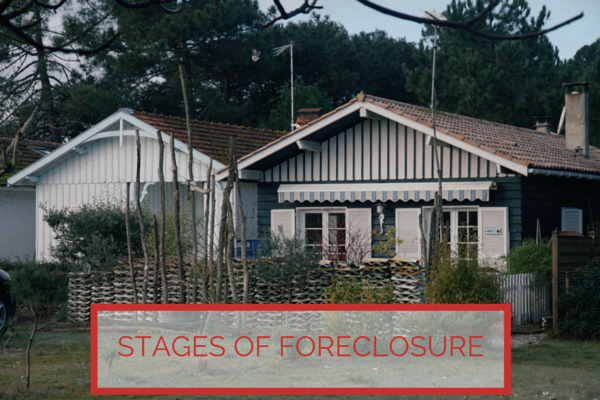Stages of Foreclosure
A lot of homeowners have gone through the process of foreclosure, which occurs when the property owner can’t afford to continue make payments on their loan. This leads to the property being forcefully seized or sold and the owner loses the right on their property.
As a homeowner, understanding the steps of the sequence is critical. Know and analyze your rights and responsibilities along the way.
Stage 1: Missed Payments
Missed payments are usually caused by hardships such as changes in employment, bankruptcy, divorce or medical challenges.
Stage 2: Public Notice
After missing 3 to 6 months of regular payments, the lender orders a trustee to record a Notice of Default (NOD) at the County Recorder’s Office. This is to make the borrower aware of an impending foreclosure and begins a reinstatement/redemption period. This period typically continues until five days prior to the home being auctioned.
The Notice of Default must be directly mailed to the homeowner within 30 days of the recording. This notice is intended to make the borrower fully aware that he/she is in the edge of losing all rights to the property and may be evicted from the house any time.
Stage 3: Pre-Foreclosure
After receiving the notice, the homeowner enters a grace period also known as pre-foreclosure. The homeowner may work out a deal with the bank by using a short sale or pay the remaining balance owed. If the homeowner can pay off the balance owed during this phase, foreclosure ends and the homeowner can avoid eviction and the sale of their home.
After receiving the default notice, the homeowner has 90 days remaining to act and another 21 to 25 days after the auction sale date is published. When the amount owed is still not paid off, the foreclosure continues.
Stage 4: Auction
If a property isn’t sold during pre-foreclosure and the homeowner defaulted on his mortgage, the home goes directly to public auction.
Things to know about auctioning your property:
- Auctions may be canceled at the last moment because the property has been sold or payments were made.
- Court-appointed trustees only accept cash or cashier’s checks.
- Properties are being sold as is, without warranties. Also, sellers need not disclose problems and buyers may find themselves with unexpected and expensive repairs.
Not all auctions were created equally. If the loan was guaranteed by the U.S Department of Housing and Urban Development, then the department solely takes ownership of the home. Either they sell it through a real estate agent or it can be auctioned on the Internet.
The bank usually sets a date for the home to be sold at a foreclosure auction if the balance owed isn’t paid by the deadline.
The Notice of Sale is recorded with the County Recorder’s Office and the homeowner receives a notification of the date and time of the sale. During the auction, the home is sold to the highest bidder for cash payment. A lot of banks make an agreement with the homeowner to take the property back because the majority of potential buyers can’t pay cash up front, or the bank buys it back at the auction.
Stage 5: Post-Foreclosure
If the property wasn’t successfully purchased by another person at the foreclosure auction, the bank automatically owns the home. Properties that are bank-owned are sold in one of two ways.
- These properties are listed with a local real estate agent for sale on the open market.
- Some lenders prefer to sell their bank-owned assets at a liquidation auction. Often times, these are held in auction houses or at convention centers.
________________________________
Do you have general real estate requests or need a Realtor to represent you in South Lyon, Novi, Farmington Hills, Livonia, Northville, Plymouth, or in any other surrounding Oakland County area? Feel free to contact me.

